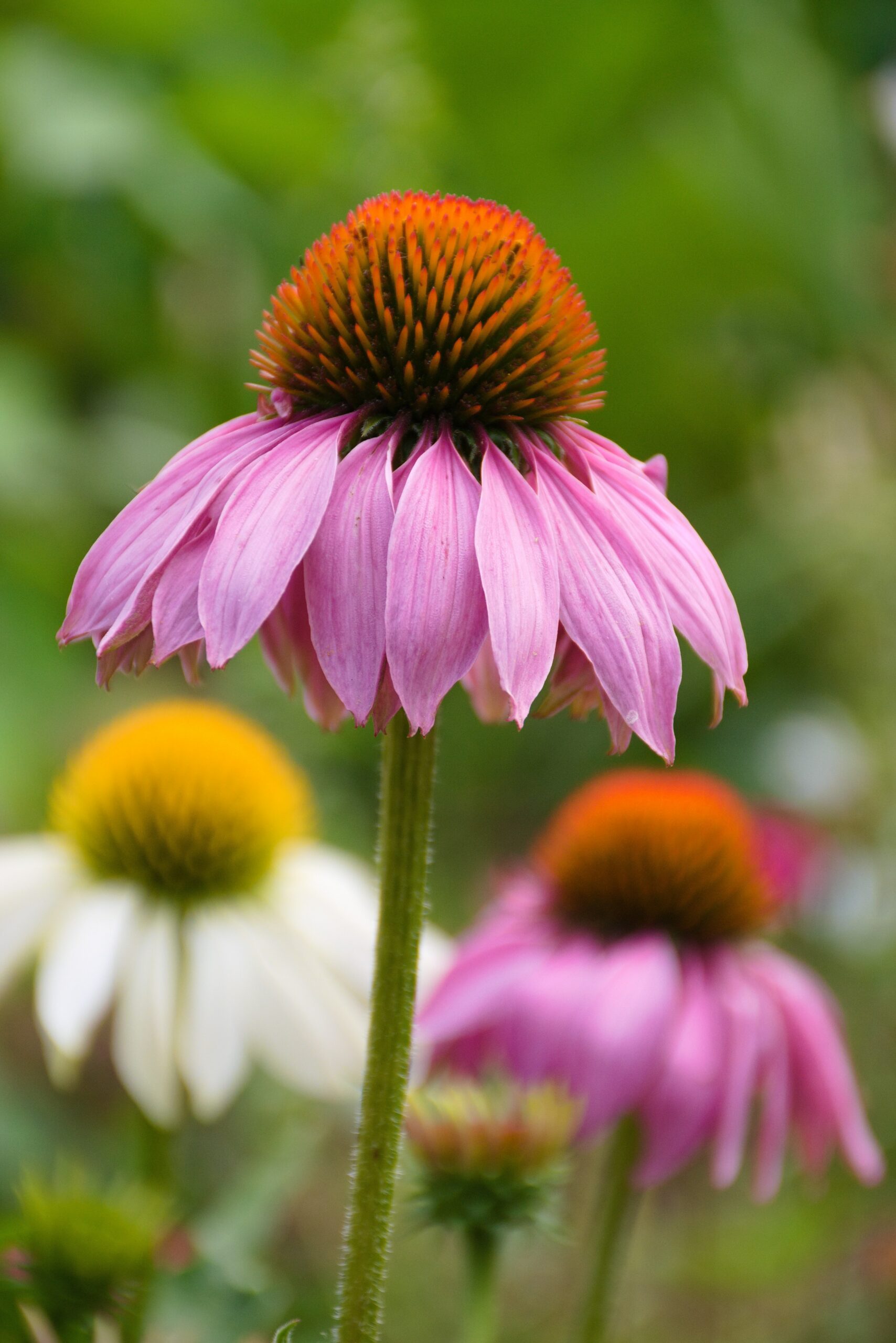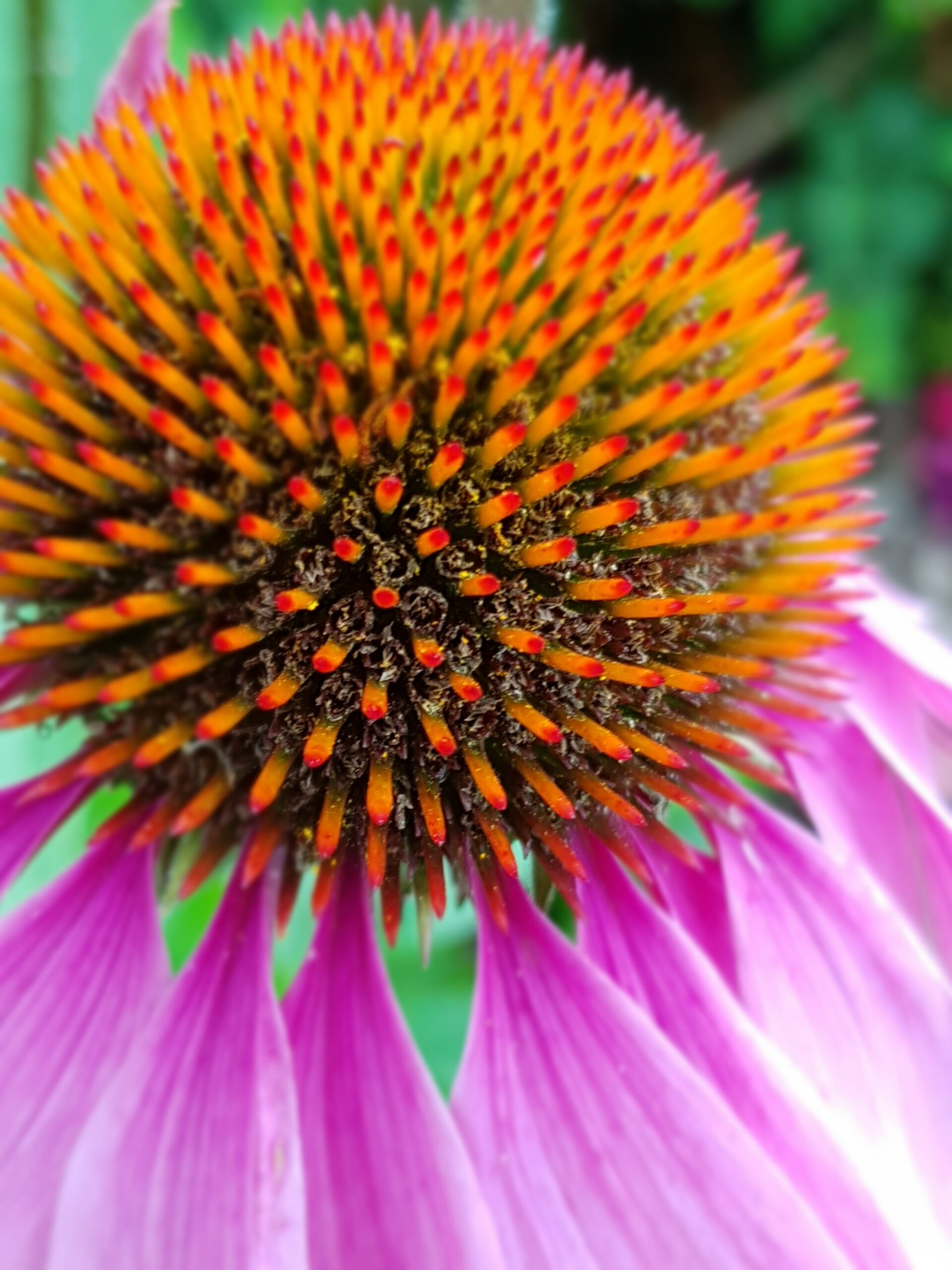Echinacea angustifolia
ECHINACEA, PURPUR-SONNENHUT
Englische Bezeichnung: Echinacea, coneflower, purple coneflower, purple Kansas coneflower, comb flower, Missouri snakeroot
Spanische Bezeichnung: Echinacea
Familie
Korbblütler (Asteraceae)
Hauptbestandteile:
Polysaccharide, Glykoproteine, Echinacosid, Echinacin, Polyacetylene, Betain, Kaffeesäureglycoside, Inulin, Sesquiterpenester, Alkamide, ätherische Öle, Flavonoide
Verwendbare Teile:
Blätter, Blütenköpfe, Wurzeln
Wirkungsweisen:
-
Alterativ
-
Immunstimulans
-
Immunmodulierend
-
Schmerzstillend
-
Antibakteriell
-
Antiviral
-
Speichelfördernd
Geschmack:
Streng
Energie:
Kühlend
Ernte-Hinweise:
Wurzeln erntet man am besten im Herbst (nach dem ersten Frost).
Blätter und Blüten können im Sommer geerntet werden, wenn die Blumen in voller Blüte stehen. Es wird empfohlen, die frischen oberirdischen Teile zu verwenden (die Bestandteile werden weniger aktiv, wenn sie getrocknet werden).
Die Wurzel von Echinacea ist eines der am häufigsten verwendeten Kräuter, was ein Grund dafür ist, dass sie mittlerweile als bedrohte Art gelistet ist.
Echinacea ist in erster Linie ein Immunstimulant, aber sie kann auch eine Rolle bei der Behandlung von Allergien und Autoimmunkrankheiten spielen. Sie wird häufig zu Beginn von Infektionen – insbesondere bei Infektionen der oberen Atemwege mit geschwollenen Drüsen – bei Erkältungen, Grippe und Infektionen der Nasennebenhöhlen, des Rachens und der Lunge eingesetzt; sie kann auch zur Heilung von infizierten Wunden und zur Verbesserung der Lymphfunktion verwendet werden.
In-vitro-Forschungen, die die Wirkung von Echinacea in Zellen untersuchten, fanden heraus, dass Echinacea die Aktivität gesunder Zellen hochreguliert, während es gleichzeitig die Entzündungsaktivität infizierter Zellen reduziert.
Resources:
Awang, D.V.C. (1999). Immune stimulants and antiviral botanicals: Echinacea and ginseng. In J. Janick (ed.), Perspectives on New Crops and New Uses (pp. 450-456). Alexandria, VA: ASHS Press.
Sharma, M., Arnason, J.T., Burt, A., & Hudson, J.B. (2006). Echinacea extracts modulate the pattern of chemokine and cytokine secretion in rhinovirus‐infected and uninfected epithelial cells. Phytotherapy Research: An International Journal Devoted to Pharmacological and Toxicological Evaluation of Natural Product Derivatives, 20( 2), 147-152. http://doi.org/10.1002/ptr.1824
Family
Asteraceae
Parts Used:
Leaves, flowers & roots
Properties:
-
Alterative
-
Immunostimulant
-
Immunomodulatory
-
Analgesic
-
Antibacterial
-
Antiviral
-
Promotes salivation
Harvesting Guidelines:
Roots are best harvested in autumn (after the first frost).
Leaves and flowers can be harvested in summer when the flowers are in full bloom. It is recommended to use the fresh above-ground parts (the components become less active when dried).
The root of Echinacea is one of the most commonly used herbs, which is one reason why it is now listed as an endangered species.
Echinacea is primarily an immune stimulant, but it can also play a role in treating allergies and autoimmune diseases. It is often used at the onset of infections – especially upper respiratory tract infections with swollen glands – for colds, flu and infections of the sinuses, throat and lungs; it can also be used to heal infected wounds and improve lymphatic function.
In vitro research investigating the effects of echinacea in cells found that echinacea upregulates the activity of healthy cells while reducing the inflammatory activity of infected cells.
Familia
Asteraceae
Partes aprovechables:
Hojas, cabezas de flores, raíces
Properties:
-
Alterativa
-
Inmunoestimulante
-
Inmunomodulador
-
Analgésico
-
Antibacterias
-
Antiviral
-
Promueve la salivación
Indicaciones de Cosecha:
Las raíces se cosechan mejor en otoño (después de las primeras heladas).
Las hojas y las flores se pueden cosechar en verano, cuando las flores están en plena floración. Se recomienda utilizar las partes frescas sobre el suelo (los componentes se vuelven menos activos cuando se secan).
La raíz de la equinácea es una de las hierbas más utilizadas, lo que constituye una de las razones por las que está catalogada como especie en peligro de extinción.
La equinácea es principalmente un estimulante inmunológico, pero también puede desempeñar un papel en el tratamiento de alergias y enfermedades autoinmunes. Suele utilizarse al inicio de las infecciones -especialmente de las vías respiratorias superiores con ganglios inflamados- para los resfriados, la gripe y las infecciones de los senos paranasales, la garganta y los pulmones; también puede utilizarse para curar heridas infectadas y mejorar la función linfática.
Las investigaciones in vitro sobre los efectos de la equinácea en las células descubrieron que la equinácea aumenta la actividad de las células sanas y reduce la actividad inflamatoria de las células infectadas.









































